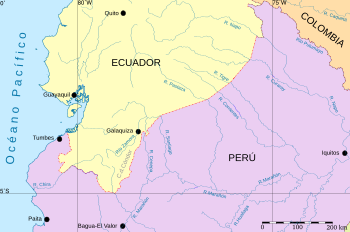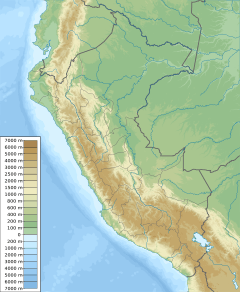Chira River facts for kids
Quick facts for kids Río Chira |
|
|---|---|

|
|
|
Location of the river's mouth
|
|
| Countries | |
| Physical characteristics | |
| River mouth | Pacific Ocean 0 m (0 ft) 4°54′S 81°08′W / 4.900°S 81.133°W |
The Chira River, also known as Río Chira, is an important river in northern Peru. It also gives its name to the valley it flows through. The river's mouth, where it meets the ocean, is about 100 kilometers (62 miles) northwest of Piura, a major city in Peru. It's also about 25 kilometers (15.5 miles) north of the port city of Paita.
This river is special because it starts in one country and flows into another. Its journey begins high up in the Andes mountains of Ecuador.
Contents
Where Does the Chira River Start?
The Chira River begins its long journey in the Ecuadorian Andes. Specifically, its source is found near a town called Papaca in the Loja Province of Ecuador.
From its source, the river flows for about 250 kilometers (155 miles). It generally travels in a westerly direction, making its way towards the Pacific Ocean.
The Chira River's Path Through Peru
After crossing the border from Ecuador into Peru, the Chira River becomes a vital water source for the region.
The Poechos Reservoir
One of the most important features along the Chira River in Peru is the Poechos reservoir. This is a very large artificial lake created by a dam. The reservoir can hold an enormous amount of water, about 885 million cubic meters. This water is used for many purposes, like irrigation for farms and providing drinking water.
Flowing Past Sullana
After the river's waters are held back by the Poechos dam, the Chira River continues its flow. It then passes by the town of Sullana, which is an important city in the Piura region of Peru. The river provides water and supports the communities along its banks.
Why is the Chira River Important?
The Chira River is very important for the people living in its valley. It provides water for farming, which helps grow crops like rice and cotton. It also supports local communities and helps with the economy of the region. The river's journey from the mountains to the ocean creates a rich ecosystem that is home to various plants and animals.
Images for kids
See also
 In Spanish: Río Chira para niños
In Spanish: Río Chira para niños



